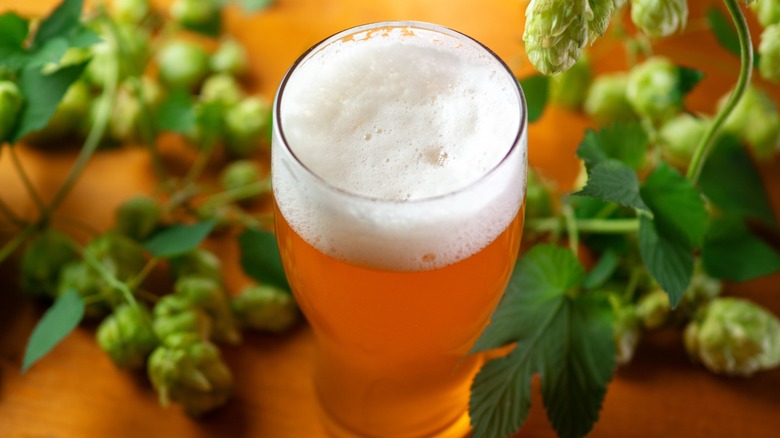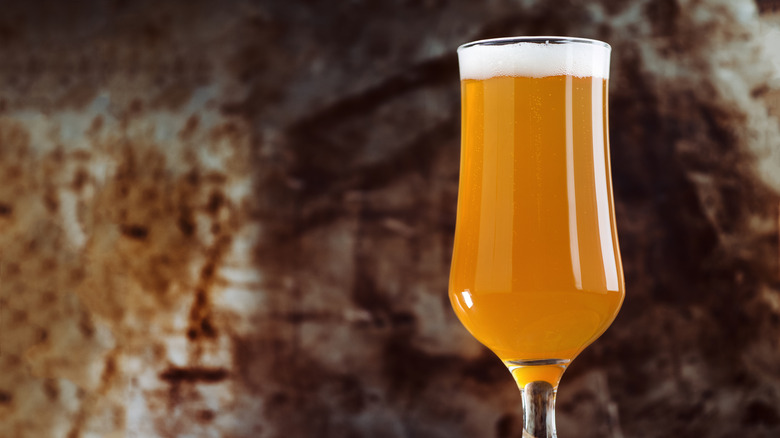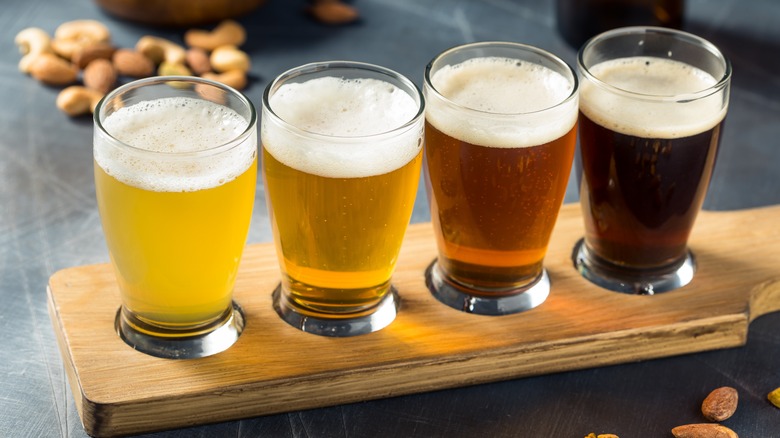Early IPAs Weren't As Strong As You'd Think
It's hard to pin down India Pale Ales (IPAs) in the modern beer market. According to The Brewer's Association, IPAs are the third most popular style of beer in the U.S. behind the mass-produced American lagers and light lagers. They also fill out most craft brewery draft menus, and according to CraftBeer.com, they're loved by brewers because it gives them a wide range of flavors to express their creativity.
At the same time, many people consider IPAs to be the most overrated beer. Craft Beer & Brewing also adds that many people just outrightly don't like the strong flavors that characterize these brews. IPAs are defined by these flavors, and even with their wide variety many people just don't like these kinds of beers. A part of this might have to do with the idea that IPAs always are and always have been potent beers with high alcohol content. Not only is that not true of many modern IPAs, but the earliest forms of this brewing style also weren't even close to the average alcohol by volume (ABV) of IPAs.
History of IPAs
As Smithsonian Magazine points out, IPAs take their name from their historic origins. As the British empire tightened its controlling grip on its Indian colonies, the British soldiers and traders living there sought some of the comforts of home. Of course, this included beer.
Wine Enthusiast points out that the most popular drink at the time would have been porters. These strong, dark beers were the most popular in Britain at the time, and soldiers would have sought out a similar comfort away from home. Smithsonian Magazine adds that the quality of these beers likely didn't hold up to the long journey, and so the East India Company tasked a brewer named George Hodgson with creating something that would last better in trading ship's cargo holds. He tried many methods, but settled on barleywine or "October Beer" which was often brewed to be cask-aged, and would do well over the six-month journey. This strongly hopped ale would be around for decades before it would be labeled as the unique brew it's become today.
Original IPAs had less alcohol
According to Beer Connoisseur, British colonists likely would have been cooling off with IPAs that had a slightly lower ABV content than modern brews. These beers would have lingered around the 6.5% mark, while today's IPAs are thought of as overly strong beers.
CNBC says that most American IPAs actually range from 6% to 7% ABV. IPAs are beloved by brewers as being a playground for them to have fun with though, and this is where you get higher ABV beers from. Some beers like Samuel Adams' Rebel Session IPA are actually lower than most with about 4.5% alcohol, but this is really more of an exception. Samuel Adams also sells Rebel Rouser Double IPA which has almost twice the alcohol content at 8.4%. VinePair reports that there are also plenty of IPAs being released with ABVs around 10%, 12%, and even 20%. This puts them in the same alcohol range as most bottles of wine, and usually have the hoppy complexity to match.
IPAs have come a long way since their practical invention. While you can easily find a light, fruity, and low-ABV version of this beer, you can also just as easily find a strong, complex, and bitter brew. It just might leave you with a headache the next morning after a single glass though.


